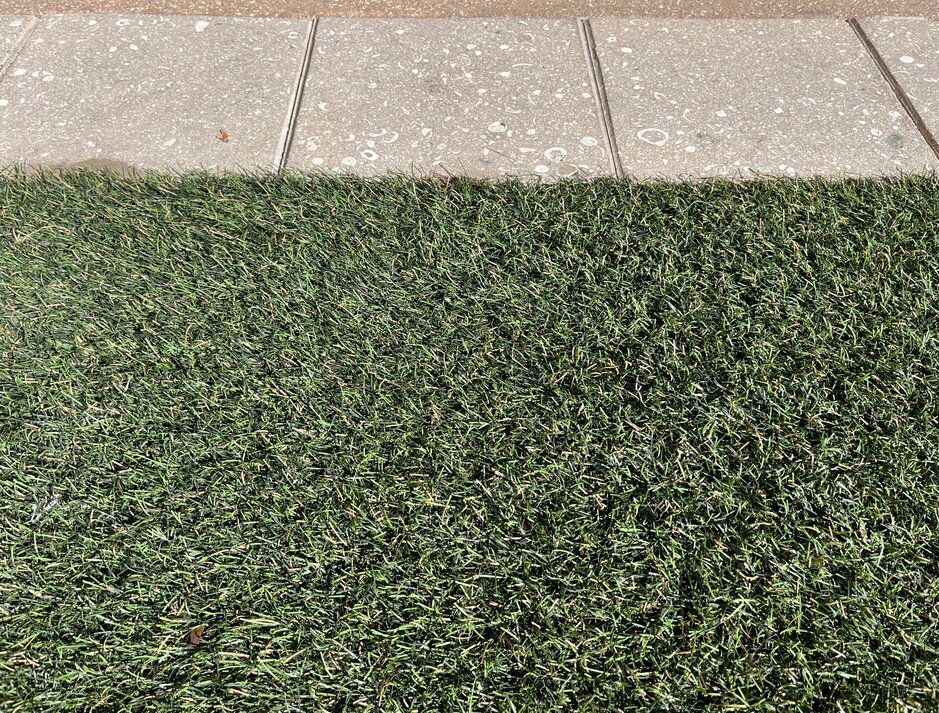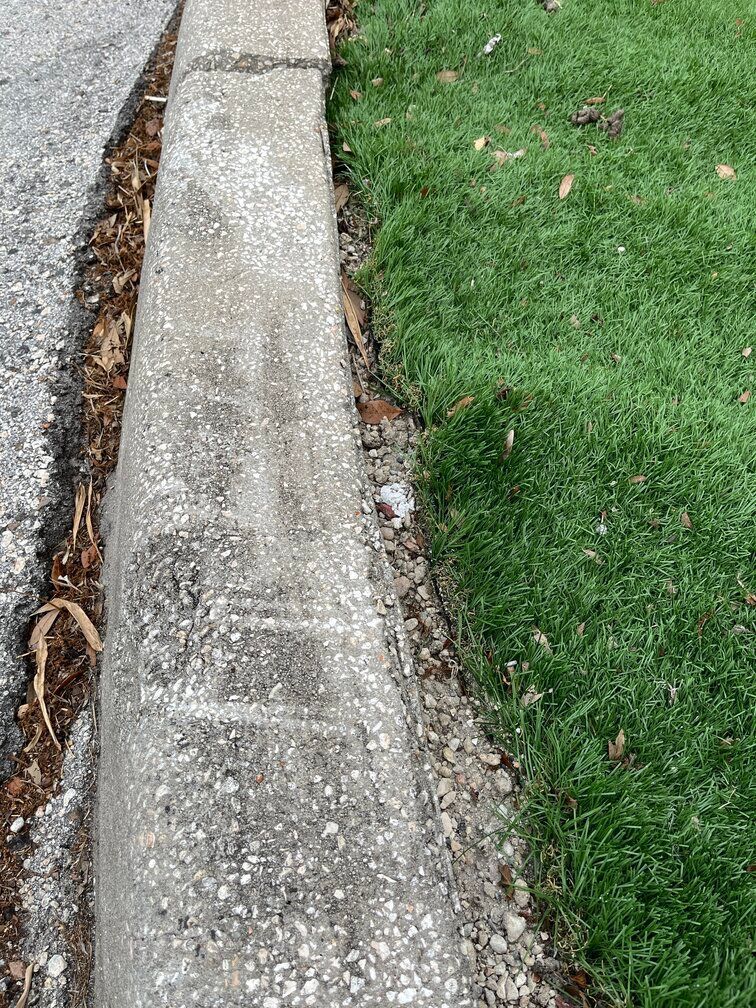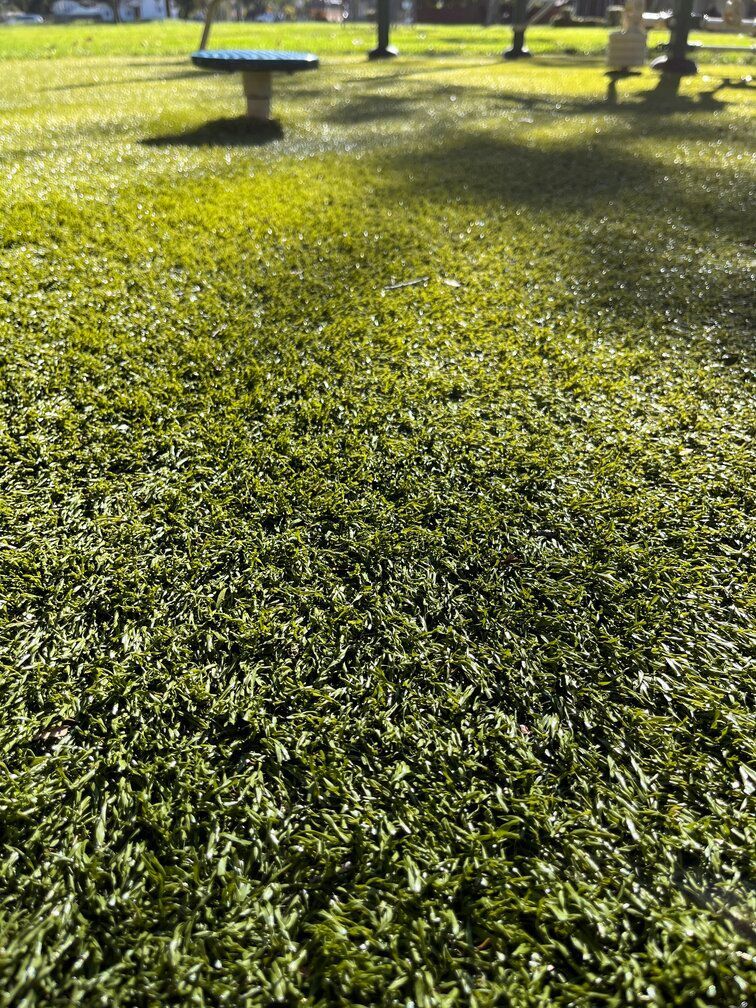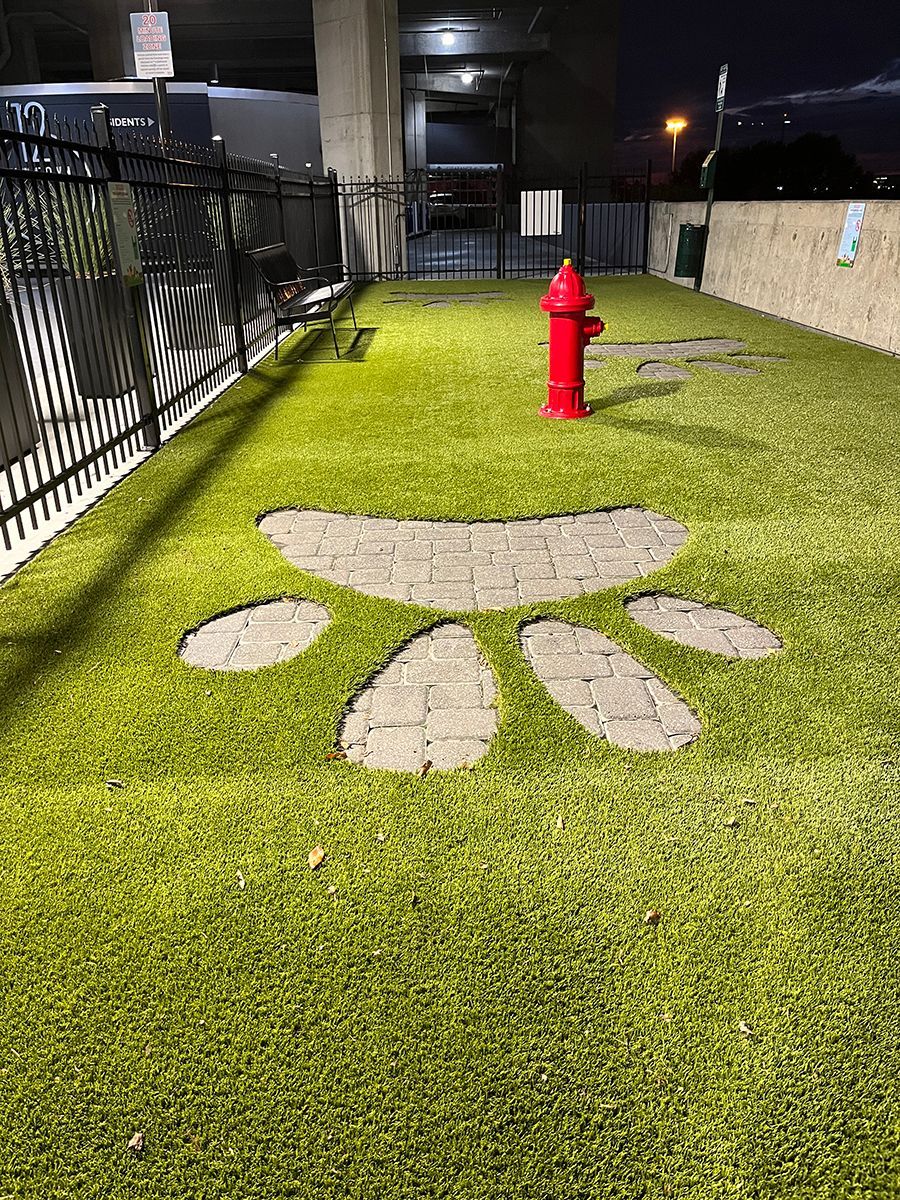What is Infill?
The benefits and science behind artificial grass infill.
Ever watched a football game or soccer game and seen a player get up off the turf covered in little black specs? Or watched a slow motion video that looked like the grass was spraying something up as a player slid across it? Or experienced a real life example where your child came home from a game and you found pellets littered all over your floor or in your washing machine?
The answer in all those instances is that you are seeing a small, useful product that is applied to most types of artificial grass. This product is called infill and like artificial grass, comes in many different forms because of the various needs and uses in the industry.
What purpose does Infill Serve?
Believe it or not, one of the primary reasons infill is added to turf is to help prop up the blades. Natural grass stands up straight with the help of mother nature. Each piece grows and reaches up, towards the source of the light, allowing the beautiful sight we are so accustomed to, a lush green lawn. But with turf, there is no living element and gravity wants to do its job. If the blades or fibers were made too rigid in order to stand on their own, they might be too stiff and uncomfortable to walk and play on. So the soft, sometimes flimsy characteristic of the fibers means they don't stand perfectly upright. By pouring a ground up material at the base of these fibers it gives them a foundation and helps them stay upright even after the weight of feet and paws treads across them.
In addition to keeping the blades from looking pressed down or matted, infill also serves to prevent breakage. Without infill, the fibers could be ground into the backing causing damage to the fibers or the backing itself. All artificial turf has a backing, underneath the blades, usually in black, that is the layer which all of the "grass" is woven to. When you see a huge roll of turf, you are usually looking at the black underside of this backing. Once the roll is installed into place, infill is poured onto the grass and sits on top of the backing. It creates a protective layer of material between feet, cleats, claws, tires or any other item that naturally comes in contact with the turf. When you consider the amount of infill used in one total install, it is far heavier than the artificial grass itself. This weight works to anchor the turf, keeping it in place as players or animals run and pivot on the material. Without this crucial element, the grass and backing would be far more likely to shift and bulge under heavy traction. Worse case scenario is that the backing could tear which is another reason we work to evenly distribute the infill no matter what the intended use of the artificial grass. For the best results, it is recommended to use between a half pound and a full pound of infill for every square foot of turf.
These are some of the most typical uses for fake grass infill, but below we will discuss some of the specific materials used as infill and why certain types may have more specific purposes.
Silica Sand Infill
One of the most common items we use for infill is regular silica. It is very inexpensive which is a feature our customers tend to like. It does not heat up from sun exposure like a darker material such as crumb rubber but it can be more abrasive. Even within this one type of infill, there are multiple versions available. Raw silica sand is the most abrasive and therefore not ideal for high traffic areas. Too much foot traffic can grind the sand across the base and wear it down faster than expected. To avoid this effect, silica sand can also be coated in acrylic polymer which covers the rough edges making each granule smoother.
Coated Silica Sand
Coated sand infill may be found on a sport field but raw silica sand is rarely going to be used on a sports turf because of the increased potential of injury to players on this surface. It also has a slight advantage (health wise) over the raw silica sand because the granules are encapsulated. The coating is green so this version is liked by many places because it hides in the turf very well and is not noticeable like a white or tan sand can be.
Antimicrobial Sand
If you're paying a little extra for the pet turf, we will use a unique version designed for this purpose. This specific antibacterial infill contains silica sand with an antimicrobial coating that is applied during the manufacturing stage. With this coating, odors and stains are essentially deterred from growing and becoming more obnoxious. You'll see below, a section about organic infills. These are one of the safest options for many uses however it's not ideal at all for a pet turf because it has the potential to soak up urine more than most infills, especially this one which is designed to repel.
Types of Sustainable or Recycled Infill
Crumb Rubber
This aptly named product is the result of shredding and grinding recycled tires until a particulate is formed that is the size of crumbs. This infill type can be produced inexpensively for very large quantities. Crumb rubber is rarely used for residential applications. The material has evolved a lot since its introduction and there are more technologically advanced styles available now for venues that are looking for the best options. Because of the original source, this material is black, just like a car tire. One of the best features of crumb rubber and similar products for sports players is that it is non abrasive, meaning that it is not rough enough to damage or injure the players skin when they are in contact at high speeds or because of heavy force. Another great aspect is that, like a vehicle tire, this type of infill can last for years without losing many of its original qualities. It remains very shock absorbent from the beginning through the end of its life span. Rubber can be combined with silica sand for some extra weight if desired but the level of abrasive material is increased when this is done.
Walnut Shells, Coconut, Cork
These infill types are also called organic infill. They can be great for the earth especially since they can be composted after their lifespan has passed. Another advantage that comes with this type of material is that it can mimic play on a natural, outdoor surface. This is great for athletes because it provides great stability and will treat a ball with more natural characteristics like bounce and speed. But the material also tends to float which is less advantageous during heavy rains.
Forget the Guesswork and Leave the Research to the Professionals
We started this business for a few reasons, but one of the biggest was because we saw a demand for artificial grass in Tampa. Our aim is to help you with a product that will last for many years and involve very little of your time.
In conclusion, the right selection of an infill for your artificial turf is a pivotal decision that hinges upon your unique preferences, specific requirements, and financial considerations for your project . It's a choice that carries significant implications for the longevity and performance of your synthetic grass surface. As we've explored in this article, various infill options come with their distinct advantages and drawbacks, and making an informed decision is essential. This is why when you partner with Tampa Turf Grass, our experience should bring a level of confidence to the game. Whether your job requires enhanced resilience, superior drainage, or a priority on environmental sustainability, we'll come equipped with an infill solution tailored to your needs.
Remember, that turf infill is not a one-size-fits-all solution; rather, it's a customized choice that should align seamlessly with your vision for your artificial turf. Our writing above was intended to allow you to understand some of the pros and cons of each infill type, in order to ensure that your investment in artificial turf remains both cost-effective and aesthetically pleasing in the long run. But we will always advise what product we believe to be most appropriate based on our industry knowledge and personal experience. Your artificial turf's performance, appearance, and overall satisfaction depend on this choice. So, take the time to understand the options, consult with other experts if needed. We're happy to discuss these pros and cons further so we can confidently agree on the infill that will transform your synthetic turf into a resilient and beautiful landscape for years to come. Call us now to begin bringing your Tampa turf dreams to realization.





